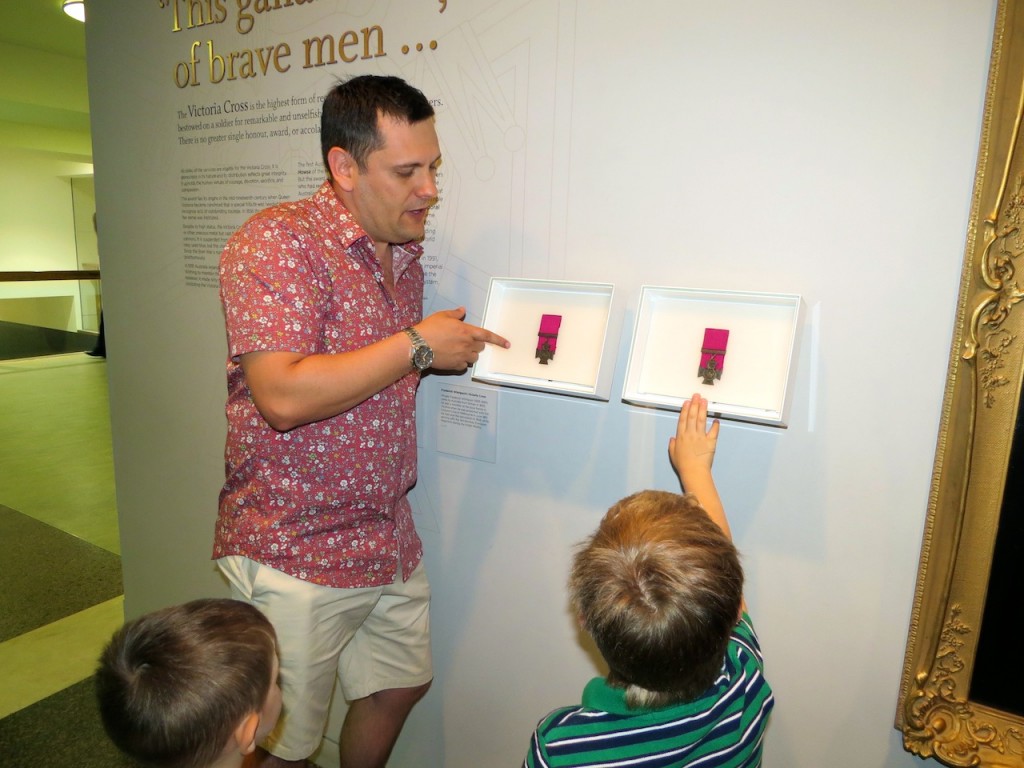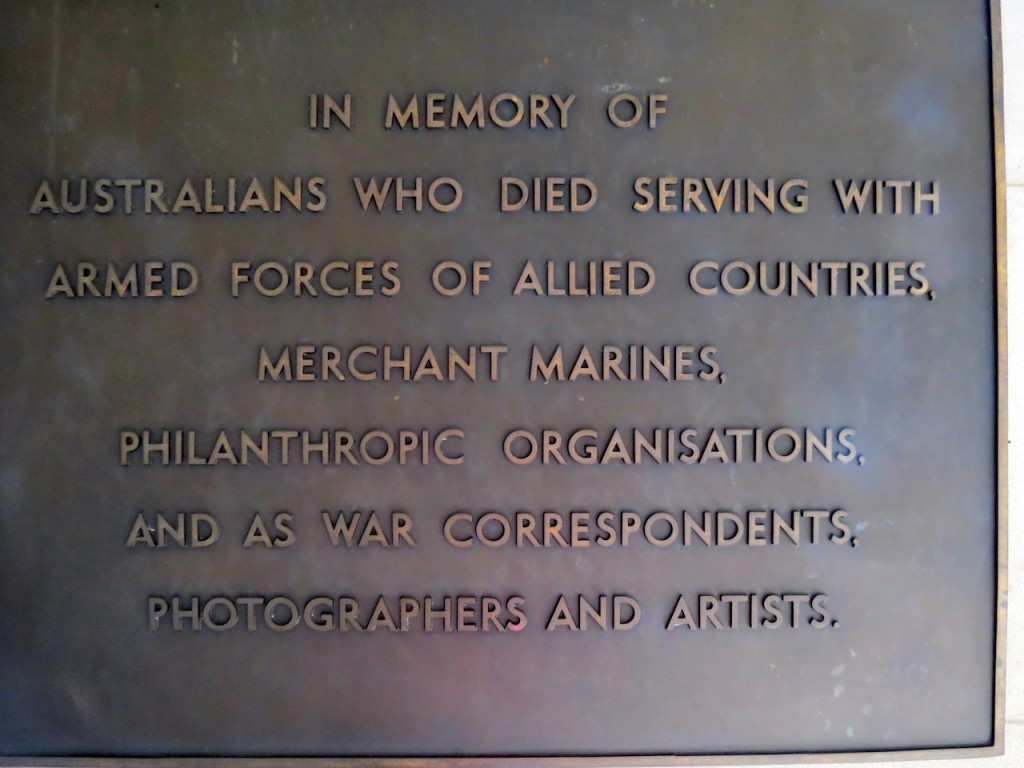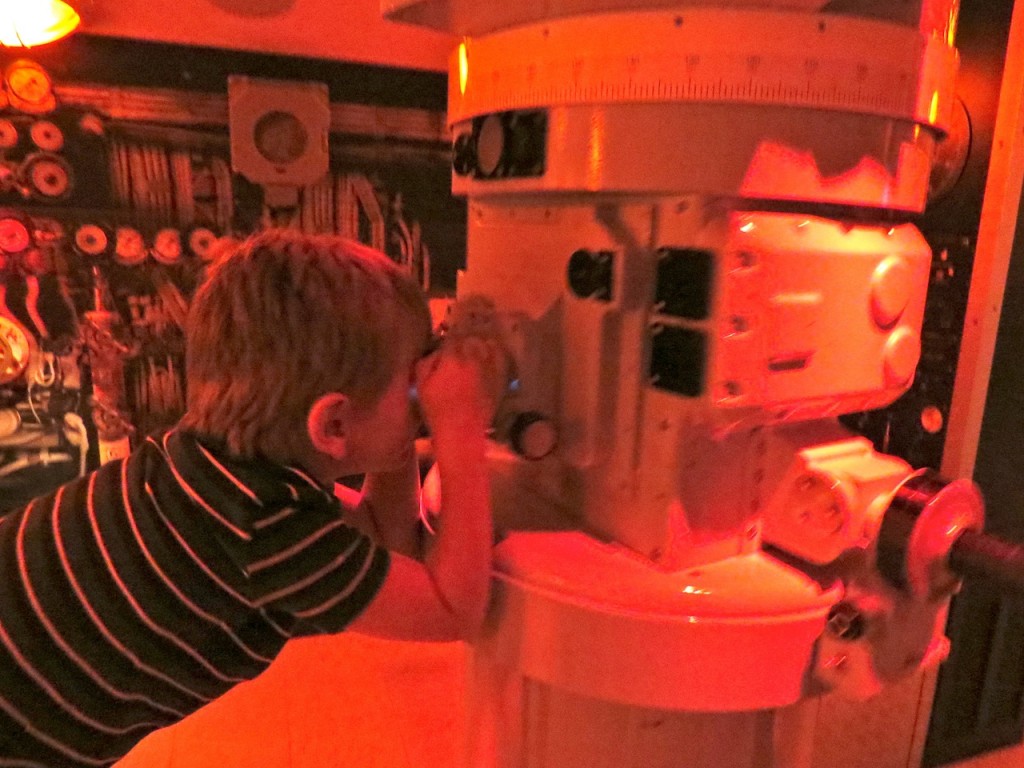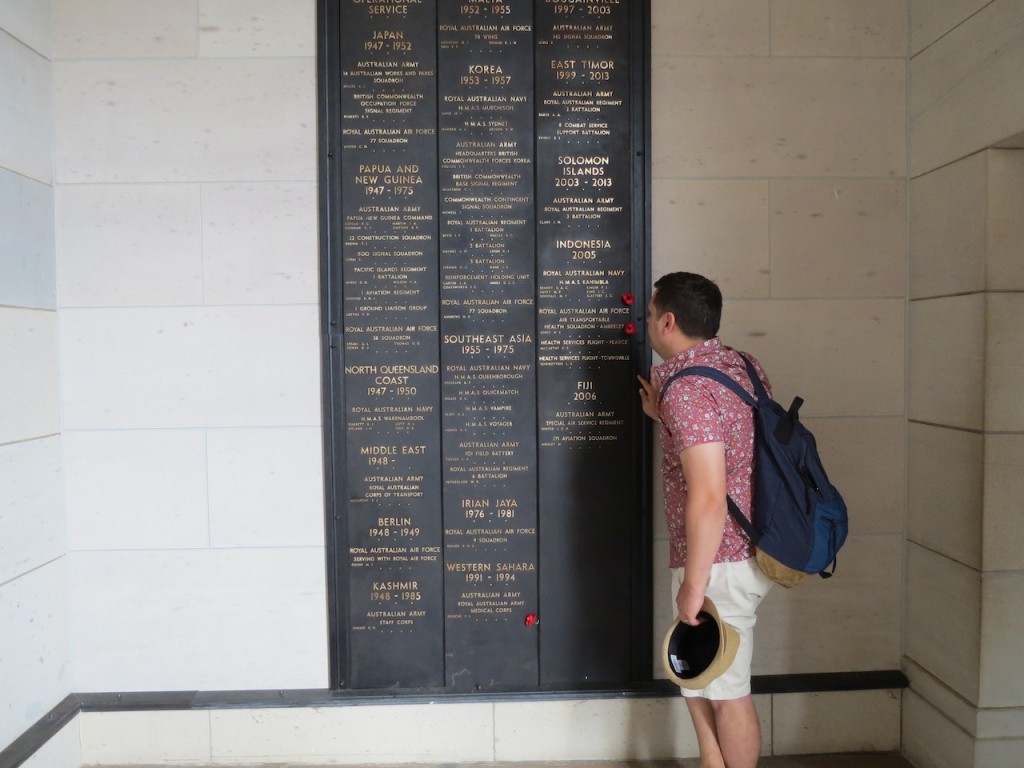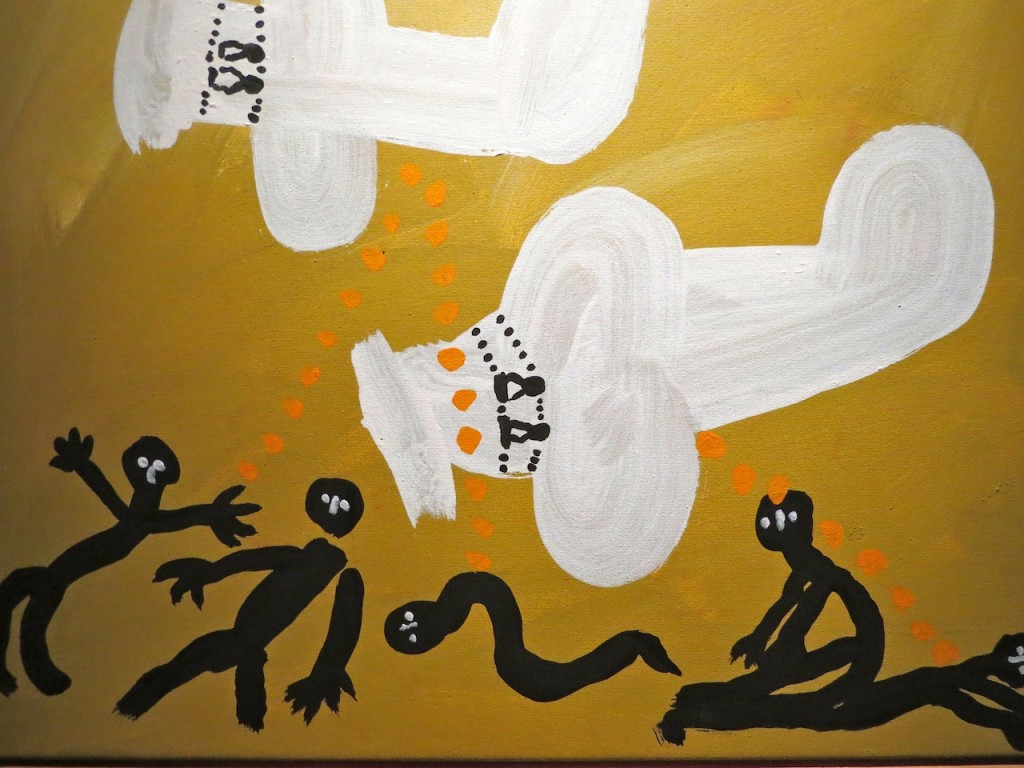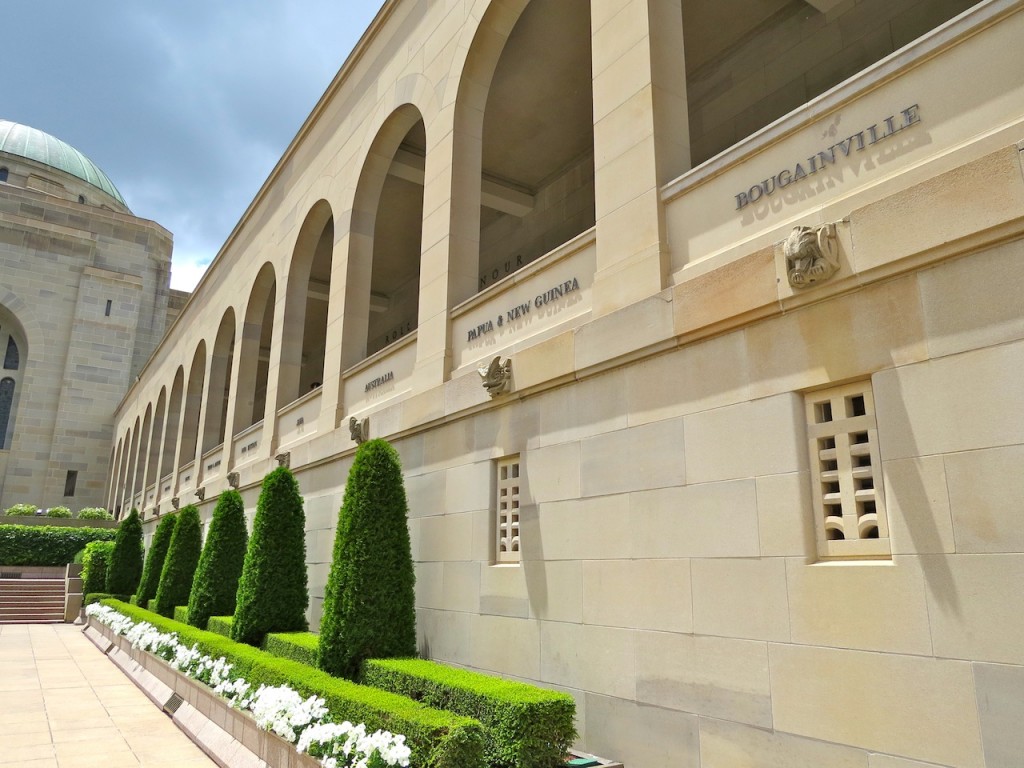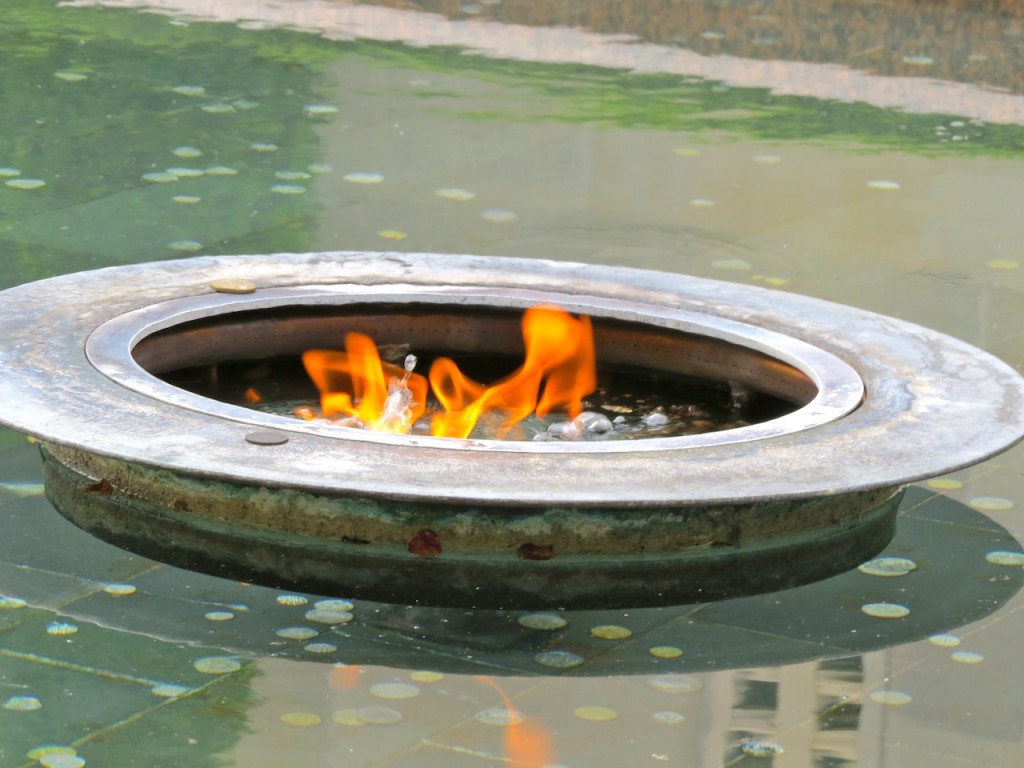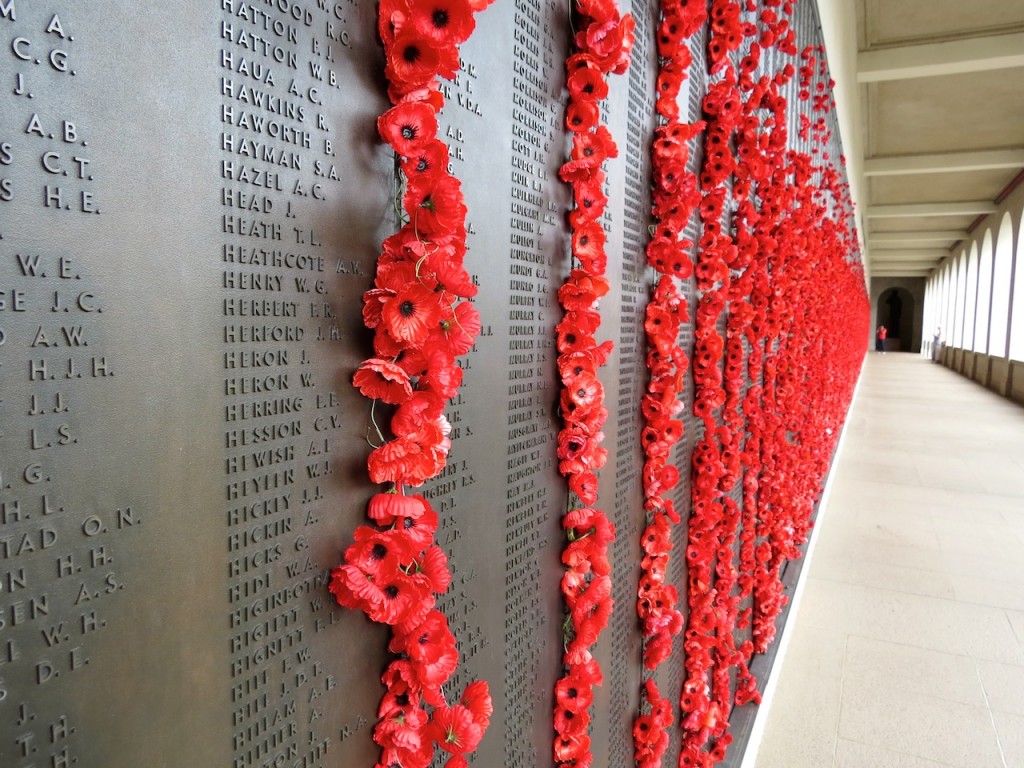 When are kids old enough to start talking to them about war do you think? As with many things, I have started talking to them about war as they started to ask questions about it. One of our stops on a recent epic 2000km road trip was Canberra. We only had twenty four hours to explore but we decided, whether it was suitable for kids or not, the National War Memorial was a priority for my husband and I. The kids accompanying us was a done deal, as usual. I am happy to say that a visit to the National War Memorial with young kids is appropriate. Expecting some tricky questions afterwards is part of the deal of course but ultimately the Memorial provided a framework for meaningful parent-child discourse about war.
When are kids old enough to start talking to them about war do you think? As with many things, I have started talking to them about war as they started to ask questions about it. One of our stops on a recent epic 2000km road trip was Canberra. We only had twenty four hours to explore but we decided, whether it was suitable for kids or not, the National War Memorial was a priority for my husband and I. The kids accompanying us was a done deal, as usual. I am happy to say that a visit to the National War Memorial with young kids is appropriate. Expecting some tricky questions afterwards is part of the deal of course but ultimately the Memorial provided a framework for meaningful parent-child discourse about war.
My husband is an ex-serviceman and a veteran international peacekeeper. The visit for him was particularly poignant. In 2005 he was about to board a plane to join a medical aid mission to the Indonesian Island of Nias which had experienced a deadly earthquake. A paperwork issue necessitated him being pulled off the mission just prior to the departure of the team. Within 24 hours a Sea King helicopter carrying the medical aid team had crashed on the Island of Nias killing 9 Australian Defence personnel including the doctor who had been called in at the last minute to replace him. If anything, having the children with him at the National War Memorial detracted from his own experience of reflection. We managed this situation by giving him some alone time at the Memorial. If we had more time it would have been great if he could have headed into the Memorial by himself for an entire other day.
Fortunately for me as I managed three kids under seven solo the Discovery Zone was open. This kid friendly space allows children to explore aspects of Australian Military history in an interactive hands on framework. Five historical areas are in the Discovery Zone:
- A trench on the Western Front in France from WWI
- The Australian home front during WWII
- An Iroquois helicopter hovering in a Vietnamese field
- An Oberon Class submarine
- A peacekeeping mission in a war ravaged community
The discovery zone isn’t however open all the time to the public as it acts as the learning centre for school group visiting. It is open to the public from 1230-130 during weekdays, and all days on weekends, public holidays and ACT school holidays.
While I have no doubt that the military recruiters hope to inspire a few young people to join the defence forces as a consequence of their visit to the National War Memorial the Memorial does in no way glorify war. It is a space for contemplation of sacrifice, heartache and loss. It is a place of reflection on what it means to be human. Conveying this to a six and four year old was of course impossible. The National War Memorial acted instead as a space for sharing a little about their dad’s history and as a focus for talking about kindness, peace in the home and why their mum absolutely won’t allow gun toys in the house. Having the children with us as we visited also intensified the emotional experience for us – if my husband had been on that mission to Nias as planned, they would never have been born. Gratitude for my husband’s sparing while others perished doesn’t seem appropriate (although I am grateful for him and the kids). For our part, we are just so, so sorry for the families that lost loved ones in that helicopter crash ten years ago. Words that seem flimsy written on a travel blog but written with my whole heart engaged I can promise.
The National War Memorial displays offers adults meaningful art and historical experiences as well as the chance to explore the military service of family members for those visiting with older kids. Those that like me chose to visit with young kids would best benefit from the WWII sound and light shows (which are noisy so are not suitable for kids that are fearful of loud noise) and the Discovery Zone.
The Hall of Memory and the Roll of Honour are an essential component of any visit for all to the Warm Memorial and, while I would have liked my kids to be a little better behaved in these adult areas they are suitable for kids and staff were welcoming. I don’t think there could be anything that conveys so effectively the loss of war than the thousands upon thousands of poppies placed beside names at the Roll of Honour. I am hoping those poppies may somehow have imprinted into my little boy’s memories and that they will influence the men they become.
A few extra tips to make sure all goes smoothly:
The Memorial is like a labyrinth and while there is a parent’s room and toilets these were particularly hard to find. Take your kids to the bathroom before you visit, and locate the bathroom once you arrive as well.
It is possible for ex service men and women to be re-traumatised by aspects of the Australian War Memorial (noises, images, even the interactive experiences in the Discovery Zone). The advice I have from those who care for psychologically traumatised veterans is that a visit to the National War Memorial may not be in their best interest.
Bubs on the Move provides tips and advice for parents traveling with small children including attraction and accommodation reviews. I’d love for you to join us on our adventures by either signing up for the newsletter, joining us on Facebook, Twitter, Pinterest and Instagram to receive updates.
© Copyright 2015 Danielle, All rights Reserved. Written For: Bubs on the Move
